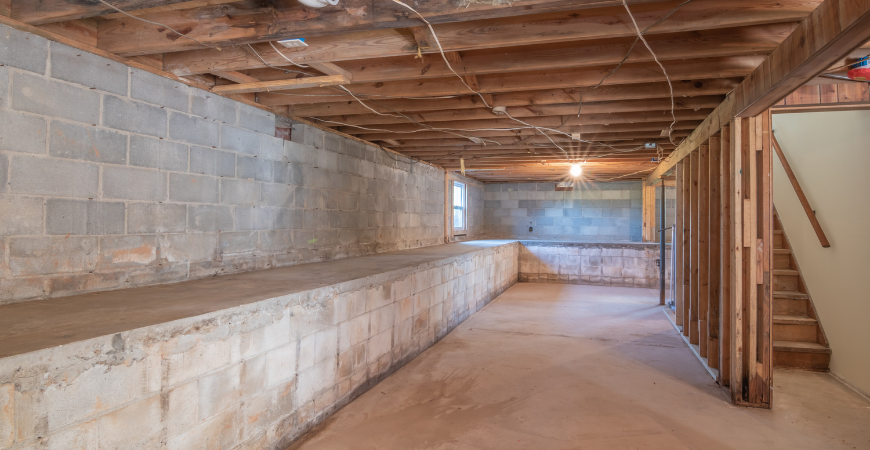As look into the future, the relevance of waterproofing solutions continues to grow, particularly in the face of evolving climate conditions and rising rainfall. Homeowners and builders alike are becoming increasingly conscious of the critical role that proper waterproofing plays in safeguarding their properties from moisture issues. It is not just about keeping spaces dry; it is about safeguarding structural integrity, improving energy efficiency, and fostering overall health in residential and working environments.
In this comprehensive exploration of waterproofing, we will explore crucial topics such as the importance of waterproofing for all home and structure, the economic benefits of early action, and common fallacies that need debunking. Additionally, we will provide guidance into the differences between interior and exterior solutions, the importance of waterproofing in various areas like cellars, ceilings, and restrooms, and tips on how to select the right products and contractors. If you are a property owner tackling do-it-yourself tasks or a commercial property manager seeking professional services, this manual will arm you with the information you require to make informed decisions about waterproofing.
Essential Moisture-Resistant Techniques
One of the most important techniques in waterproofing is the installation of barriers. This entails creating a protective layer that blocks moisture from infiltrating surfaces such as dividers, roofs, and bases. Materials such as waterproof membranes and coatings are commonly used in both residential and commercial applications. These barriers are especially vital in areas susceptible to heavy rainfall, ensuring that water does not cause construction damage or foster mold growth.

Another efficient method is the use of drainage systems. Proper drainage diverts water away from susceptible areas, mitigating the risks linked with flooding and water build-up. https://aluneed.ca/ , sump pumps, and gutters are fundamental tools in managing water flow. By strategically placing drainage systems, homeowners can protect crawl spaces and foundations, ultimately protecting the integrity of their property.
Lastly, frequent maintenance and inspections play a crucial role in effective waterproofing. Regularly checking for gaps, gaps, and signs of water damage can help identify issues before they intensify. This anticipatory approach not only saves money on costly repairs but also prolongs the life of waterproofing systems. Staying vigilant and upkeeping all waterproofing measures is essential for any dwelling or building to ensure long-term protection against water damage.
Cost-Effectiveness Analysis of Waterproofing Solutions
Embracing waterproofing offers substantial sustained savings, making it a wise option for homeowners and property managers alike. By identifying and tackling potential water issues early, you may sidestep costly repairs that arise from damaged infrastructure, mold cleanup, or various water-related problems. The cost of conducting waterproofing measures, whether it’s in the basement, roof, or exterior walls, is insignificant compared to the possible financial burden of extensive damage and the associated repair costs.
In addition to just repairs, waterproofing can also increase the marketability of your property. A well-maintained and waterproofed home is more attractive to customers and renters, leading to higher resale or rental prices. Additionally, waterproofing minimizes the likelihood of moisture-related issues that can degrade your property's integrity over time, ensuring it remains a secure and inviting investment. This aspect is particularly vital in regions that experience heavy rainfall or flooding, where waterproofing becomes even more necessary.
Moreover, waterproofing boosts better energy efficiency within your home or building. Properly waterproofed spaces aid in avoiding drafts, cut down on the workload on heating and cooling systems, and decrease utility bills. This energy efficiency, combined with the avoidance of costly repairs, boosts the overall financial viability of waterproofing investments. In conclusion, the benefits of waterproofing extend mere protection against water damage, showcasing its value as a comprehensive investment for any property owner.
Selecting the Appropriate Waterproofing Options
Selecting the appropriate waterproofing solutions for your house or structure is crucial to providing lasting protection against water damage. Commence by reviewing the specific needs of your building. Various areas may necessitate diverse methods; for case in point, basements typically need a mix of interior and exterior waterproofing, while roof areas may gain advantage more from high-quality coatings. Consider considerations such as climate, construction materials, and the track record of hydrological issues in your area when choosing the best approach.
It is important to weigh DIY options against contractor services. Though some property owners may decide to tackle smaller waterproofing jobs themselves, larger projects or those that involve professional knowledge could be best handled by experts. Investigate the pros and cons of all option, including expenses, performance, and the duration. Engaging a certified waterproofing contractor can guarantee that the job is done correctly and that you avoid typical mistakes that may arise from subpar work.
In conclusion, value quality over cost when selecting materials. Investing in high-quality waterproofing materials can protect you considerable money in repairs down the line. Seek out coatings and membranes that have proven success in your specific setting and that come with strong warranties. Keep in mind that the right waterproofing solution not only defends your home but also improves its value and energy efficiency, making your purchase worthy.
